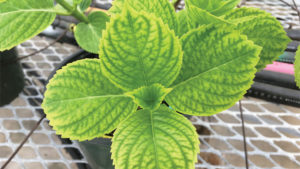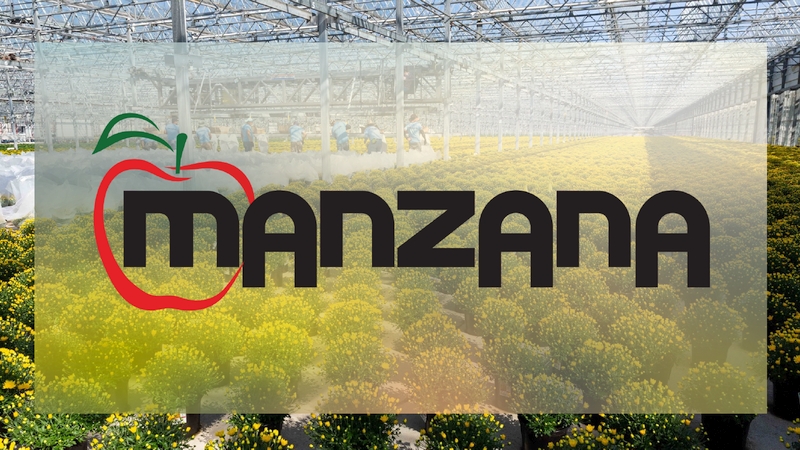How Low Substrate pH Can Cause Lower Leaf Chlorosis
 During zonal geranium production, growers should monitor and adjust (raise or lower) substrate pH to the optimal range of 5.8 to 6.5. According to a report from W. Garrett Owen of Michigan State University (MSU) Extension, during the first month of geranium production, little pH adjustment is often required. However, as plants mature, water and fertility demand increases, leaching occurs, and substrate pH drop can occur.
During zonal geranium production, growers should monitor and adjust (raise or lower) substrate pH to the optimal range of 5.8 to 6.5. According to a report from W. Garrett Owen of Michigan State University (MSU) Extension, during the first month of geranium production, little pH adjustment is often required. However, as plants mature, water and fertility demand increases, leaching occurs, and substrate pH drop can occur.
When substrate pH drops below 5.8, iron (Fe) and manganese (Mn) availability and uptake increases. Plants accumulate these immobile nutrients to toxic concentrations in lower leaf tissue, which is often referred to as Fe and Mn toxicity.
Symptoms of Fe and Mn toxicity begins in the lower leaves where they initially become chlorotic (yellow). Initial symptoms intensify and leaves exhibit chlorotic spotting, interveinal chlorosis, leaf bronzing, dark-brown to black spotting along leaf margins, and marginal leaf necrosis (tissue death).
Necrosis often progresses inward between veins, and leaves become scaberous (rough) due to tissue death. Leaf drop often occurs and growers must remove leaves from plants prior to shipping.
For more information on how to minimize the risk of chlorosis, check out the full report on the MSU website.









